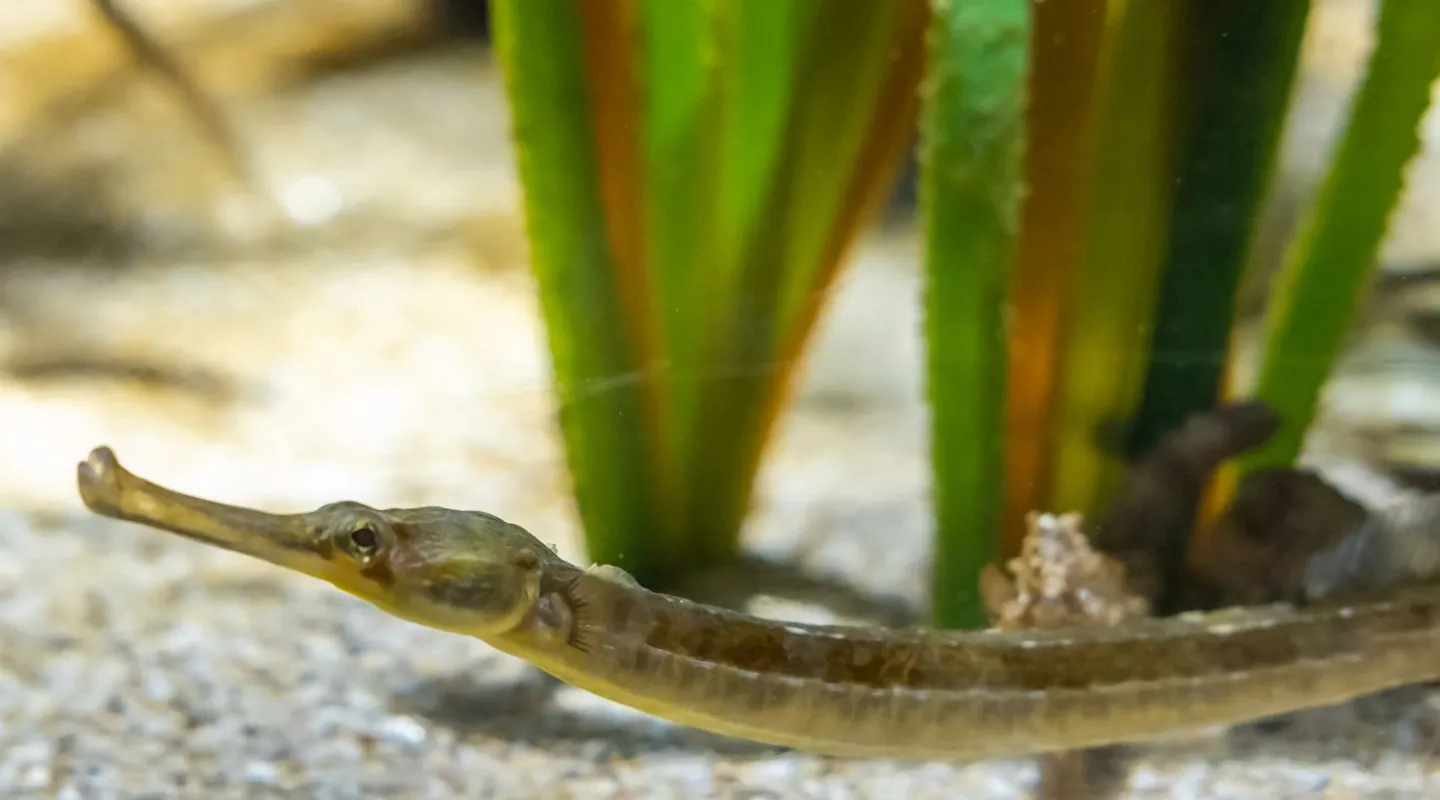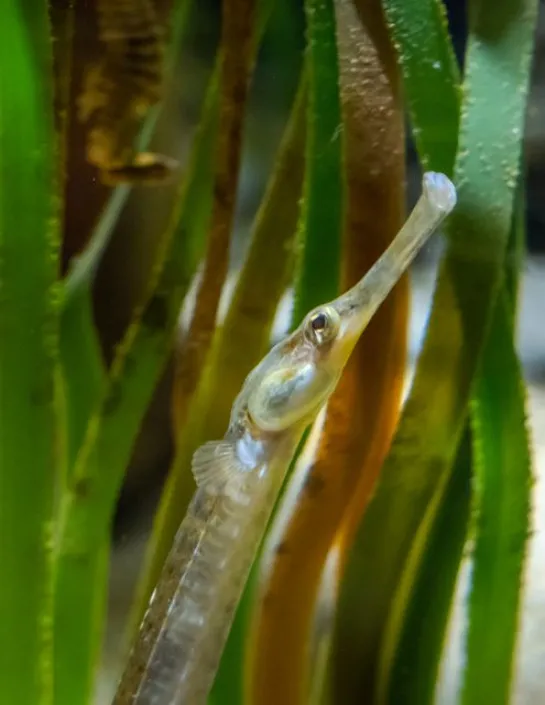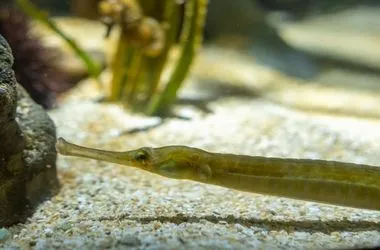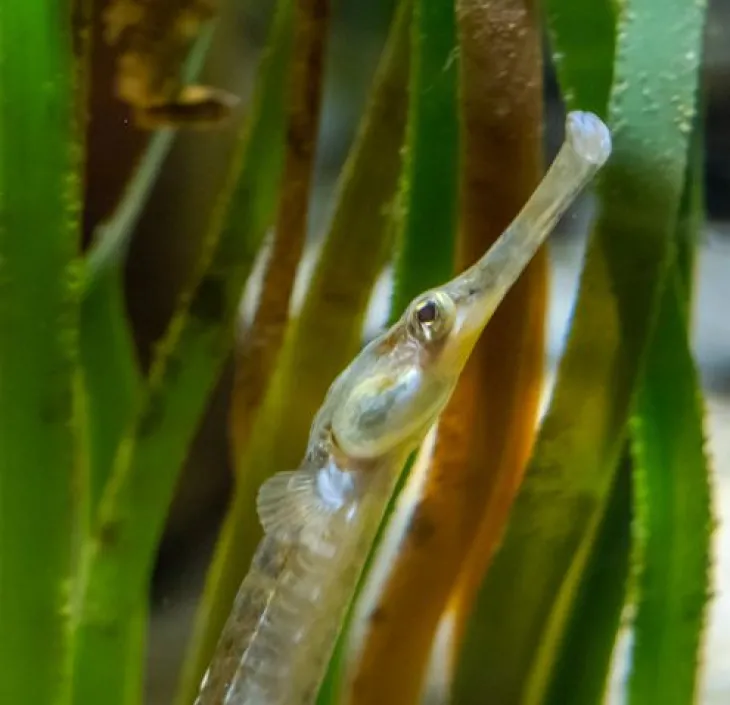It is very precise when it eats: it slowly approaches tiny shrimps that are handed to it and then sucks them in with a quick, brisk stroke.
It is extremely proficient at camouflaging itself in sand and algae.

Cold and temperate sea fish

Identity card
Not evaluated
It inhabits the Mediterranean Sea and the eastern Atlantic Ocean from Scandinavia to South Africa.
The longsnout pipefish lives in calm waters, on a variety of seabeds, whether sandy, rocky or detrital.
It measures 30 to 50 cm. This species is ovoviviparous.
It feeds on small planktonic crustaceans which it sucks in with its snout.
Mankind and Shores


400, this is the number of eggs contained in the male's ventral pouch.
It is very precise when it eats: it slowly approaches tiny shrimps that are handed to it and then sucks them in with a quick, brisk stroke.
It is extremely proficient at camouflaging itself in sand and algae.
The longsnout pipefish lives in calm waters, on a variety of seabeds, whether sandy, rocky or detrital, as well as among algae and seagrass beds. It also appreciates the brackish waters of estuaries.
This fish has an elongated and very slender body and looks like an uncoiled seahorse. The longsnout pipefish can change its appearance so that it can be camouflaged against the various backgrounds where it lives motionless.
Its snout, which resembles a pipette, is longer than the rest of the head.
It measures 30 to 50 cm.
The longsnout pipefish is ovoviviparous, it breeds in the summer. Like seahorses, the male keeps the eggs in its ventral pocket for 5 weeks until they hatch.
As it is polygamous, it can incubate the eggs of different females.
The Ocean Mag
In the spotlight
Poissons, crevettes, requins, les animaux qui se reproduisent ou sont élevés à Nausicaá rejoignent les espaces d'exposition.

Article
Savez-vous combien d’espèces de requins sont à découvrir à Nausicaá ? Apprenons-en plus sur ces animaux fascinants !
Article
Which came first, the egg or the fish? A brief overview of eggs and reproductive strategies in marine animals.